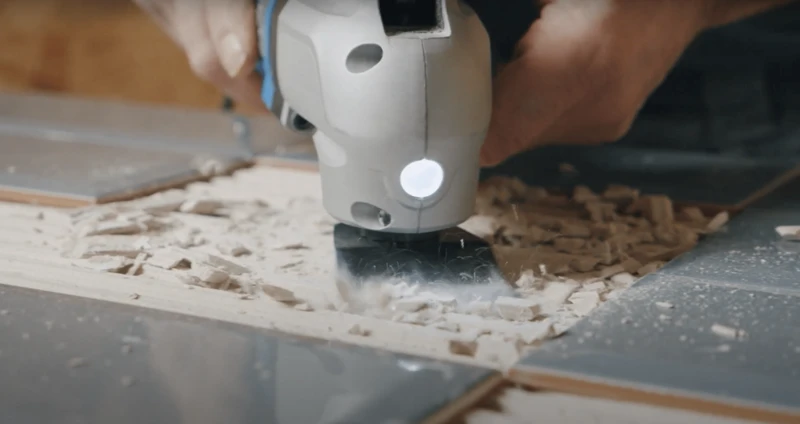Tile glue removal can be a daunting task, especially when faced with the prospect of bringing walls back to their original state. Whether you’re renovating or simply updating a space, knowing how to remove tile adhesive from walls efficiently and effectively is essential. This guide will walk you through the various steps and methods, ensuring you’re well-equipped to tackle the job at hand.
Understanding Tile Adhesive Types
Before embarking on the journey of tile glue removal, it’s crucial to identify the type of adhesive you’re dealing with, as each requires a different approach.
Thin-Set Mortar
Thin-set mortar is a blend of cement, fine sand, and a water-retaining agent. It’s the most commonly used adhesive for tiles and has a strong bonding ability. Its removal requires patience and the right tools to avoid wall damage.
Mastic Glue
Mastic glue is an organic compound traditionally used for wall tiles. It’s not suitable for high-moisture areas but is easier to remove compared to thin-set, often softening with heat or chemical products.
Epoxy-Based Adhesive
Epoxy-based adhesive is a two-part system known for its durability and resistance to moisture and chemicals. Removing this type of adhesive can be challenging and might necessitate professional-grade solvents.
Preparation for DIY Tile Glue Removal
Before starting the DIY tile glue removal process, ensure you have the necessary protective gear such as gloves, goggles, and a mask. Clear the area of any fixtures and cover surrounding surfaces to protect against debris and chemical splatters.
Best Way to Remove Tile Glue from Walls
Finding the best way to remove tile glue from walls depends on the type of adhesive and the condition of your walls. Here are some effective methods:
Using Heat to Soften Tile Adhesive
A heat gun or a hairdryer can be used to soften mastic glue, making it easier to scrape off. Apply heat evenly and cautiously to prevent wall damage.
Stripping Tile Mastic with Chemical Removers
Chemical removers can dissolve mastic, allowing for easier scraping. Always follow the manufacturer’s instructions and ensure proper ventilation when using chemical products.
Manual Removal Techniques
For thin-set and some epoxy adhesives, manual scraping with a putty knife or an oscillating tool may be necessary. Work carefully to avoid gouging the walls.
How to Clean Glue Off Walls After Removal
Once the bulk of the adhesive is gone, it’s important to know how to clean glue off walls to prepare them for painting or new tiles.
Cleaning Wall After Tiling
Use a damp sponge or cloth to wipe down the walls, removing any remaining adhesive residue. For stubborn spots, a mixture of warm water and mild detergent can be effective.
Tile Adhesive Cleaning Tips
- Test cleaning solutions on a small area first to ensure they don’t damage the wall.
- Use a plastic scraper to avoid scratching the wall surface.
- For tough residues, a sanding sponge can be used gently.
Removing Old Tile Glue from Walls
Removing old tile glue often requires more effort due to its hardened state. Moistening the adhesive can sometimes help in loosening its grip on the walls before proceeding with scraping or chemical treatment.
Wall Tile Adhesive Remover: Tools and Materials
Effective wall tile adhesive remover tools include heat guns, scrapers, oscillating tools, and chemical solvents. Materials like protective sheets, gloves, and sponges are also essential in preventing damage and ensuring a clean workspace.
Finishing and Repairing Walls Post-Adhesive Removal
After the tile adhesive has been removed, the walls may need some care to bring them back to a smooth finish.
Repairing Minor Damage
Fill small holes or cracks with spackle, sanding the area smooth once dry. This prepares the surface for painting or new tile installation.
Addressing Major Wall Damage
Larger areas of damage may require the application of a new piece of drywall or a skim coat of plaster. Consult a professional if the damage is extensive.
When it comes to home improvement and renovations, one challenge that often crops up is removing adhesive materials from various surfaces. If you’re dealing with tile glue on walls and looking for a step-by-step guide, our detailed article on how to get tile glue off floors can provide you with some valuable insights that are also applicable to walls. For those tackling other surfaces, we have resources that cover a range of situations. Discover the best methods for dealing with wood adhesives in our article on how to get wood glue off walls, or if you need to remove carpet glue from concrete, our guide on how to get carpet glue off concrete will definitely come in handy. Each guide is designed to help you safely and effectively clear your surfaces for your next project.
Conclusion: Maintaining Walls After Tile Glue Removal
Post tile glue removal, maintaining your walls is straightforward. Keep them clean and inspect periodically for any signs of damage. With proper care, your walls will remain in excellent condition, ready for whatever aesthetic changes you have in mind.


